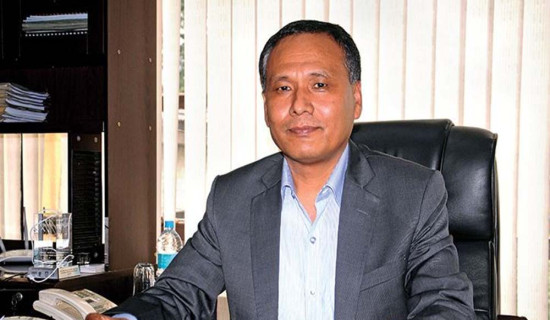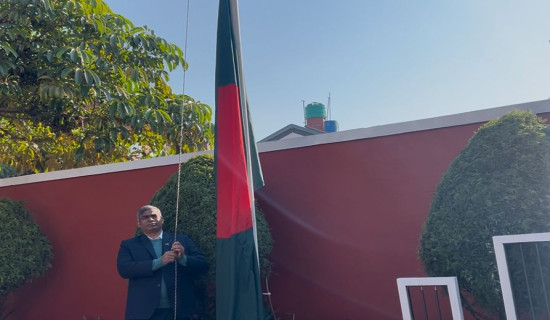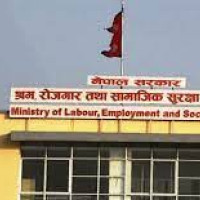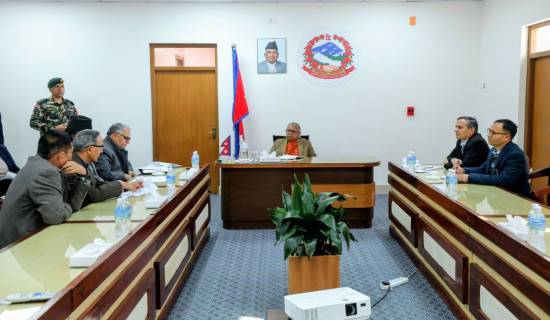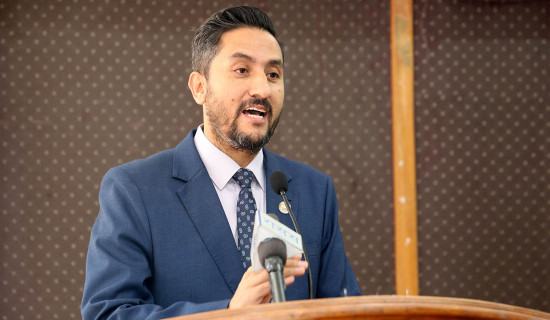- Thursday, 18 December 2025
Lumbini And Kapilvastu: Archaeological Discussion
Lumbini, the birthplace of Gautam Buddha (563–483 BC), and his hometown, Kapilvastu, are described in various historical sources, including Buddhist texts. Historical and archaeological evidences confirm that the location of both of these sites is currently within the territory of Nepal. Lumbini, which is also listed on the UNESCO World Heritage Site, is located 300km southwest of Kathmandu. It is in Rupandehi district. And also, there are ruins of ancient Kapilvastu, 28km west of Lumbini.
Looking at the political geography of the Buddhist period, there were 16 large and powerful countries in the region called Sohra Mahajanapada. The other smaller states were called 'Janapada' and numbered more than fifty. Kapilvastu was one of the Janapadas. Although Gautam Buddha's family background is called the royal family, historically there was no monarchical system in Kapilvastu but a republic. So, it is also called the Shakya Republic.
There is a brief description in Buddhist literature of when and by whom the Shakya Republic Kapilavastu was founded. According to the Buddha himself, the princes of King Okkak of Kashi came to this region and established the kingdom of Kapilvastu. But by the time of Gautama Buddha, it had developed into a republic spread over a vast territory. Under Kapilvastu at that time, there were eight large and prosperous metropolises, including Chatuma, Khomadussa, Metalup, Samgam, Sinsumar, Shilawati and Shakkar. There were towns and villages as well. The name of the capital was Kapilvastu, and it was a prosperous metropolis. During the lifetime of the Buddha, the kingdom of Kapilvastu was destroyed by the wrath of the Kosala king Vidudabha. But the rest of the Buddhist life there continued. The location of towns other than Kapilvastu is now a matter of discovery, and the search for the capital, Kapilvastu, took shape in 1895 AD. The existence of the ancient Kapilvastu has been proven after the discovery of the Ashoka Pillar at Niglihawa and its inscriptions. Based on the same records, the focus shifted to Lumbini, the birthplace of the Buddha, to other sites and to the east. As a result, Lumbini was discovered on December 1, 1896.
There was a time when both Lumbini and Kapilvastu could not be identified, and archaeologists such as Alexander Cunningham and Carlyle were speculating on the location of these sites. Various places in India were confused as Kapilvastu and Lumbini. So, Dr. A. Fuhrer discovered Kapilvastu in 1895 and Lumbini in 1896 with archival evidence. Other experts then came to the conclusion by conducting further studies and research. The previous beliefs had to be relaxed. It was established that the location of these two places belongs to Nepal. And, since then, all questions about the existence of Lumbini and Kapilvastu have come to an end. The publication of articles and books in this regard has led to the publication not only of Lumbini and Kapilvastu but also of the Devdaha kingdom associated with the Buddha.
Individuals, societies and nations are found to be proud of the places where Buddha is associated. Bodhgaya, the place where Buddha attained enlightenment, Saranath, the place where Buddha’s first teaching was delivered (Dharmachakrapravartan), and Kushinagar, the place where Mahaparinirvana was attained.
However, there are those in India who claim that Kapilvastu belongs to India and not to Nepal. Failure to understand the truth raises unnecessary questions about Kapilvastu as well as Lumbini. If it is not clear in this context, the question of whether Buddha was born in Nepal or in India will never be solved.
While Kapilvastu and Lumbini were discovered in Nepal and further studies were carried out, that is, in 1897-98, Dr. W. C. Pepe was also involved in the excavation work in Piprahawa. About a kilometre south of this place is Ganavariya, where K. M. Srivastava started excavations in 1971–73. Based on the archaeological remains and other materials found there, he claimed that the ancient Kapilvastu was not in Nepal but in the place where he excavated. But that claim was very weak, and the same archaeologist came to Piprahawa and again engaged in further excavations. From the ruins of a stupa at this site, Pepe found inscriptions inscribed on the casket (Sukit Bhatin Sa Bhaginikans Putladalam Iyan Salil Nidhate Budhas Bhagwate Sakiyan).
Srivastava, on the basis of this inscription and three seals inscribed with the name 'Kapilvastu', further asserted his claim to these places as ancient Kapilvastu. Looking at the excavated site and the situation there, one can see a large Buddhist monastery and a small village at the site of Ganavariya, while in Piprahawa, only large stupas and small monasteries can be seen. However, this place cannot be called a city or a capital. Monasteries and small villages can be seen, while in Piprahawa, only large stupas and small monasteries can be seen. However, this place cannot be called a city or a capital.
It is natural to find Piprahawa, Ganavariya and other places in the territory of ancient Kapilvastu state or capital spread over a wide area. But the main area of the capital seems to be in Tilaurakot, Nepal. Recent archaeological excavations in and around Tilaurakot further confirm this connection. Chinese Buddhist pilgrims Seng-sai (4th century), Fahian (5th century), and Huen-sang (7th century), It-sing (7th century), Shravasti, the birthplace of the Krakuchhand Buddha (Gotihawa), the birthplace of the Buddha (Niglihawa) and the deep city of Gautam Buddha, Kapilavastu, are described as having reached Kanakamuni. While visiting these and other places, they are seen heading east towards Kushinagar, visiting the birthplace of the Buddha and, even earlier, the Ramgram Stupa.
The distances, directions, and locations described in the descriptions of Niglihawa, the birthplace of the Buddha under Kanakamuni, and Gotihava, the site of Krakuchhand Buddha, as described by these travellers, are now in place in present-day Nepal.
The dispute over Kapilvastu is about the birthplace of the Buddha. Apart from Lumbini in Nepal, there is no other Lumbini in India. Kapilvastu is the basis for saying that Buddha was born in India. And the basis for Nepal to say that Buddha was born in Nepal is the presence of important sites of ancient Kapilvastu, including Lumbini, in Nepal. The stubbornness of the ancient Kapilvastu being in its place may be fine emotionally, but it is not the same from a historical and archaeological point of view. The same ancient Kapilvastu is divided into two countries according to modern political geography. There is no dispute over the existence of Lumbini in Nepal.
(The author has published two books on Lumbini and currently he is studying Buddhist archaeology of India.)



